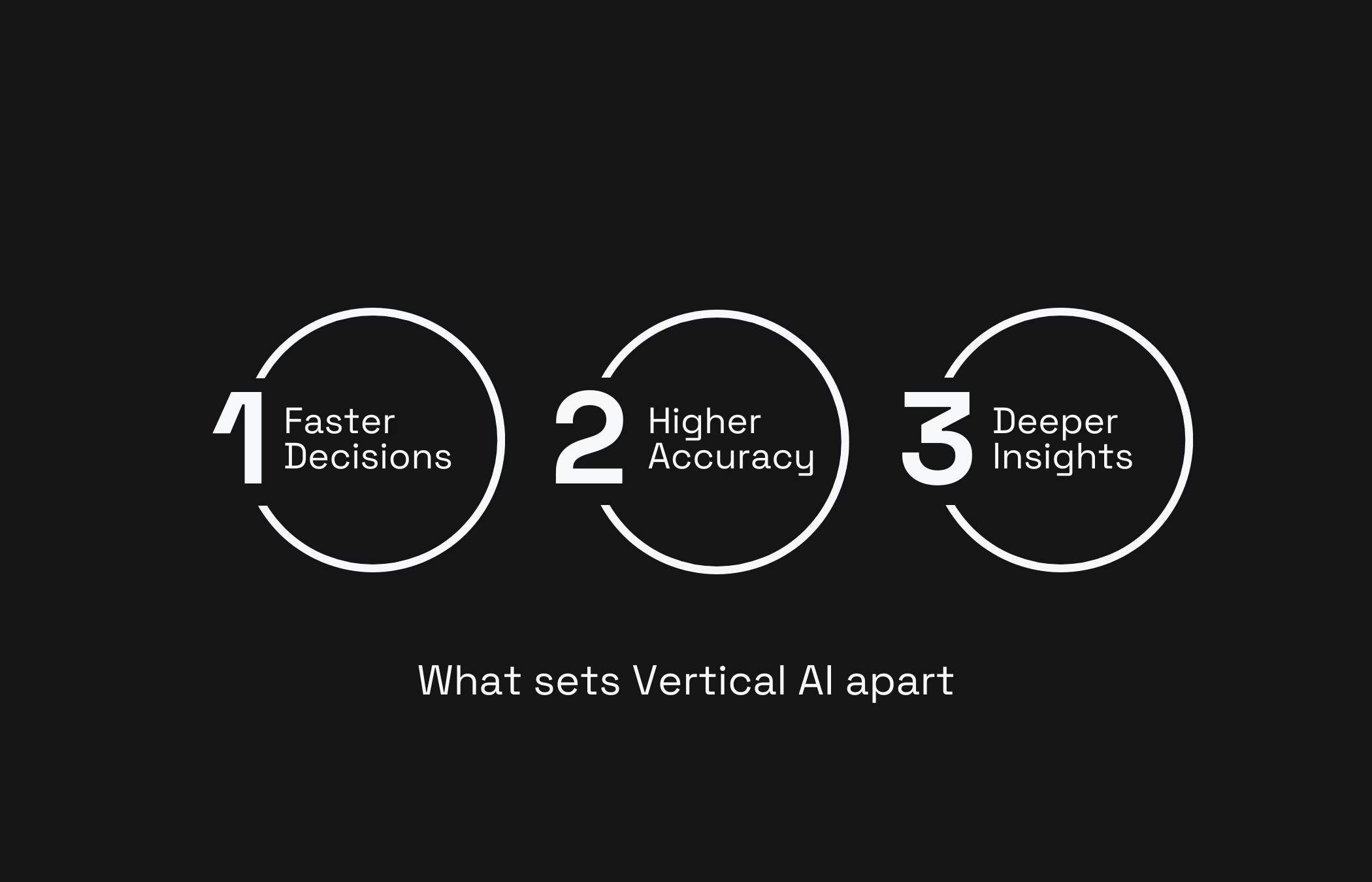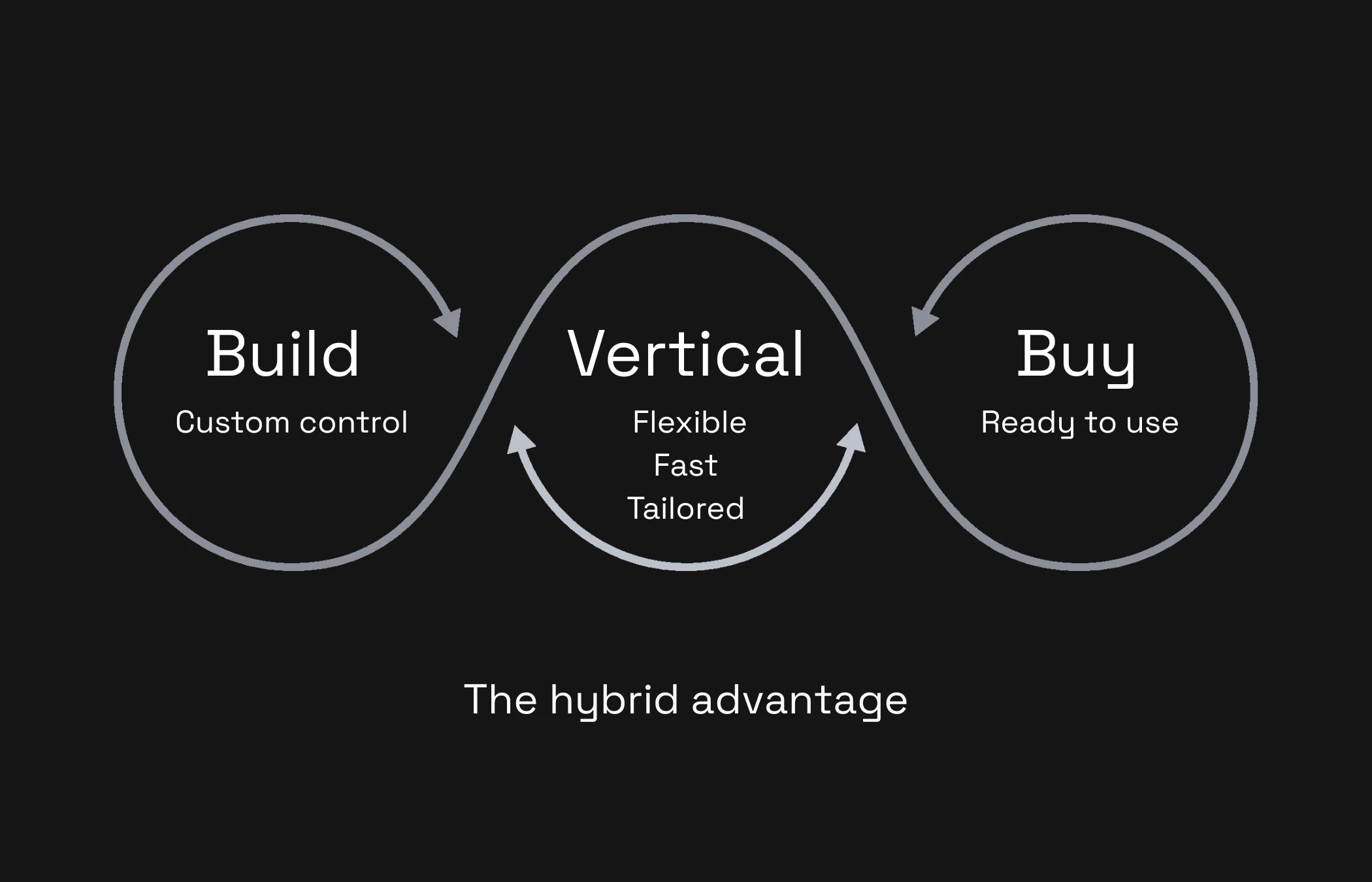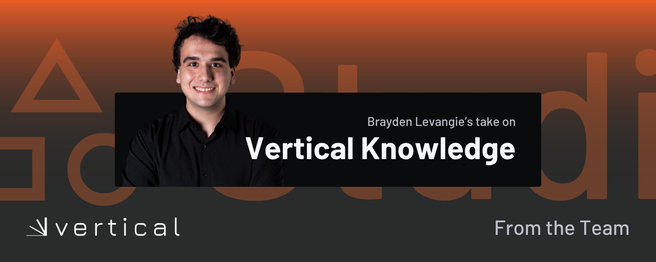
What is vertical AI? Understanding domain-specific Artificial Intelligence
Vertical AI is built to deeply understand and perform within a specific industry or function. It's less about doing everything, and more about doing one thing exceptionally well.
At Vertical we, and the whole world for that matter, see that AI adoption and advancement is evolving fast. But while general-purpose tools like ChatGPT or Midjourney have set the foundations of AI adoption, many professionals are starting to ask deeper questions: Can AI handle the specifics of my industry? Can it fully understand my workflows, my terminology, my challenges?
That’s where we and vertical AI as a concept come in. A new wave of AI designed to go beyond broad utility and into tailored expertise. In this article, we’ll unpack what vertical AI is, why it matters, and how it will change the game for professionals and businesses in nearly every field.
The evolution of Artificial Intelligence: From general to vertical applications
Artificial Intelligence began with broad ambition. Early systems were built to solve general problems. The goal was versatility: one model to rule them all. And while general AI has made impressive strides, it often lacks the context needed to perform well in specialized environments.
If you’ve ever tried using a general model to analyze a legal contract or assist with complex medical records, you’ve probably run into this gap. Maybe you’ve spent hours fine-tuning prompts. Adding phrases like “you are an expert in contract law”, only to receive output that misses the nuance, misinterprets clauses, or sounds too generic to trust. It’s not that the model isn’t intelligent. It’s that it doesn’t truly understand the domain.
This is the kind of friction that gave the need for vertical AI.
Instead of trying to guide a general model with increasingly elaborate prompts, we’re now building AI systems that are trained and fine-tuned on industry-specific data. This gives them a baseline of knowledge that aligns with how professionals actually think, speak, and work. Rather than simulating expertise, these models embody it. The result is AI that feels less like a tool you’re constantly steering, and more like a partner that already speaks your language.
The shift is clear: the future of AI isn't about building one model that does everything. It’s about building many models that each do one thing incredibly well.
What makes an AI solution vertical?
Vertical AI is different from horizontal AI, it isn’t just a fancy way of saying “industry-specific.” It represents a fundamental design difference in how an AI system is built, trained, and deployed.

Domain expertise and specialization
Vertical AI systems are built with context at their core. Rather than being trained on broad data, they learn from carefully selected, domain-specific sources. That might include historical campaign data for a creative agency, customer service transcripts in e-commerce, or internal documentation from a SaaS platform. These models also incorporate the language, logic, and workflows that professionals in those fields actually use.
This deeper grounding allows them to understand nuance that general AI might miss. For example, a vertical AI model designed for marketing teams in the fintech space won’t just generate generic headlines. It will produce copy that aligns with regulatory standards, matches brand tone, and resonates with a financially literate audience. It knows the difference between growth APR and APY, and when to use which.
Custom workflows and integration points
Where general models often function as standalone tools, vertical AI is designed to work within the software professionals already rely on. Whether it’s a CRM used by sales teams, a content management system in publishing, or analytics software in retail, these models can integrate directly into core workflows. This makes AI feel less like an add-on and more like an extension of the team.
It’s not just about the tools, either. Vertical AI is built to support how work actually gets done in a specific field. It understands processes, roles, and goals. Whether that means assigning leads in a sales pipeline, generating performance reports for client portfolios, or flagging anomalies in financial audits.
What is the importance of vertical AI solutions for you?
Vertical AI isn’t just a technological advancement, it’s a competitive advantage.
Businesses that adopt vertical AI can move faster, reduce errors, and uncover insights that would otherwise go unnoticed. More importantly, they can automate routine knowledge work while keeping domain expertise at the core.
By delivering relevant output with context-aware precision, vertical AI enables teams to shift focus from operational work to higher-order thinking. And in industries where regulation, risk, and accuracy matter, that shift is not optional. It's essential.
Building vs. buying, Vertical brings both worlds together
For businesses exploring vertical AI, the traditional choice has been either build or buy.
Building gives you full control. You can train a model on proprietary data, align it with internal systems, and shape it around your unique workflows. But the reality is, this approach comes with high demands. You’ll need dedicated infrastructure, skilled engineers, ongoing maintenance, and a deep understanding of compliance and data governance. It’s powerful, but not always practical.
Buying, by contrast, offers speed and simplicity. Pre-trained agents are ready to use and often customizable through user-friendly interfaces. This lowers the barrier to entry and makes AI adoption faster, especially for teams without in-house technical expertise. But off-the-shelf solutions can come with trade-offs in flexibility, precision, and long-term scalability.

Why Vertical changes the equation
Vertical isn’t just a choice between building or buying. It’s a new model that combines the strengths of both.
You don’t need to be a developer to create something powerful. With Vertical, professionals across marketing, operations, legal, finance, and beyond can fine-tune AI agents using their own knowledge and data. No coding required. What once took a team of engineers can now be achieved through an intuitive workflow designed for domain experts, not just technical ones.
And the value doesn’t end at creation. Verticals’ Stream opens the door to a dynamic ecosystem where you can publish, discover, and deploy specialized models tailored to real-world use cases. Need an AI trained on SaaS onboarding flows? A model tuned for ESG compliance reporting? It might already be there or you can build your own and offer it to others.
Most importantly, Vertical supports a hybrid path. Start with a proven model from the Stream, use it out of the box, then shape it into something more personalized as your needs evolve. This means you can move quickly without being boxed in later.
Vertical brings flexibility without compromise. Power without complexity. And a future where AI is not just accessible, but adaptable.
How we see the future of vertical AI
We’re at the start of a new phase in AI development. General AI will continue to improve, but it won’t replace the need for vertical intelligence. Instead, we’ll see increasing collaboration between broad models and specialized ones. Where a general model routes a task to the most capable vertical agent, much like a general practitioner referring a patient to a specialist.
We’ll also see vertical AI expand into new fields: education, logistics, energy, agriculture. As more professionals see the value of AI tuned to their world, demand for niche agents will grow and the platforms that support their creation will play a pivotal role.
Getting started with vertical AI
If you’re exploring how vertical AI could help your business, here’s where to begin:
Identify high-impact areas. Look for processes that are repetitive, time-intensive, or require specialist knowledge.
Assess available data. Good vertical AI depends on access to relevant datasets; internal, public, or third-party.
Evaluate existing tools. Platforms like Vertical let you test-drive vertical agents or create your own with minimal setup.
Pilot and refine. Start small, validate performance, and build trust within your team.
Scale what works. Once you see results, expand usage across teams or integrate with more of your workflow.
Vertical AI doesn’t have to mean a full transformation overnight. It starts with thoughtful, targeted steps and a willingness to rethink what AI can do for your domain.




